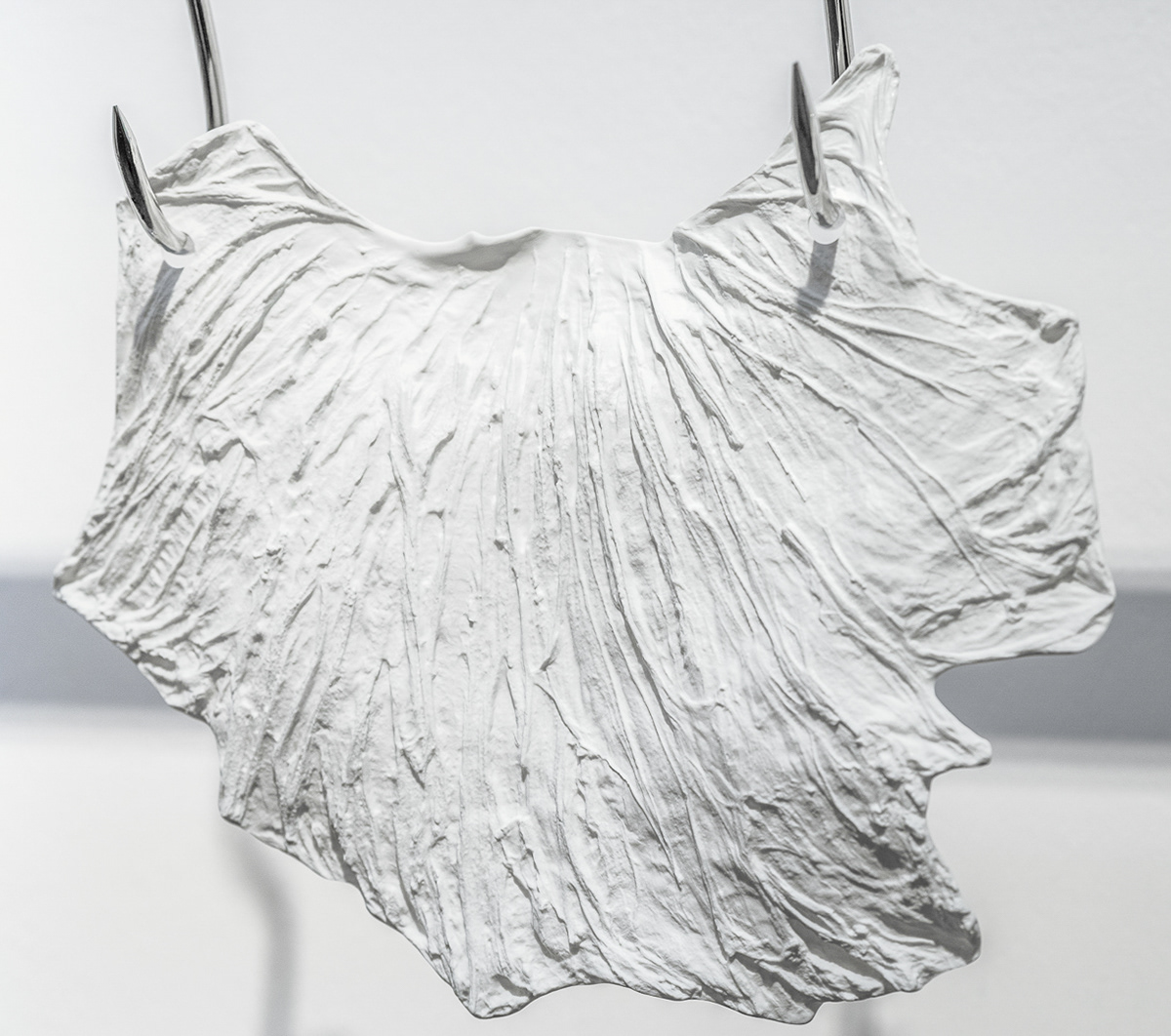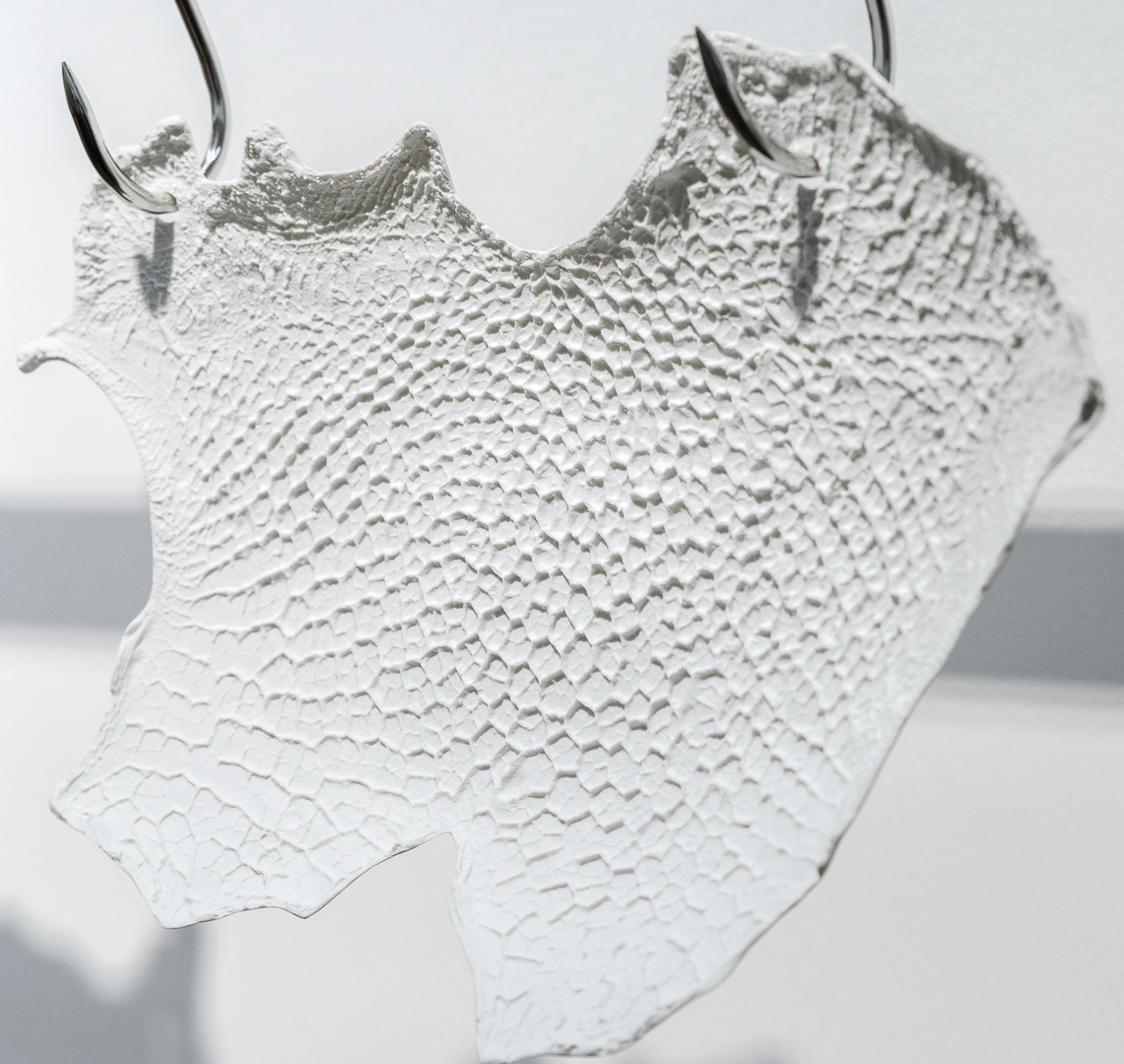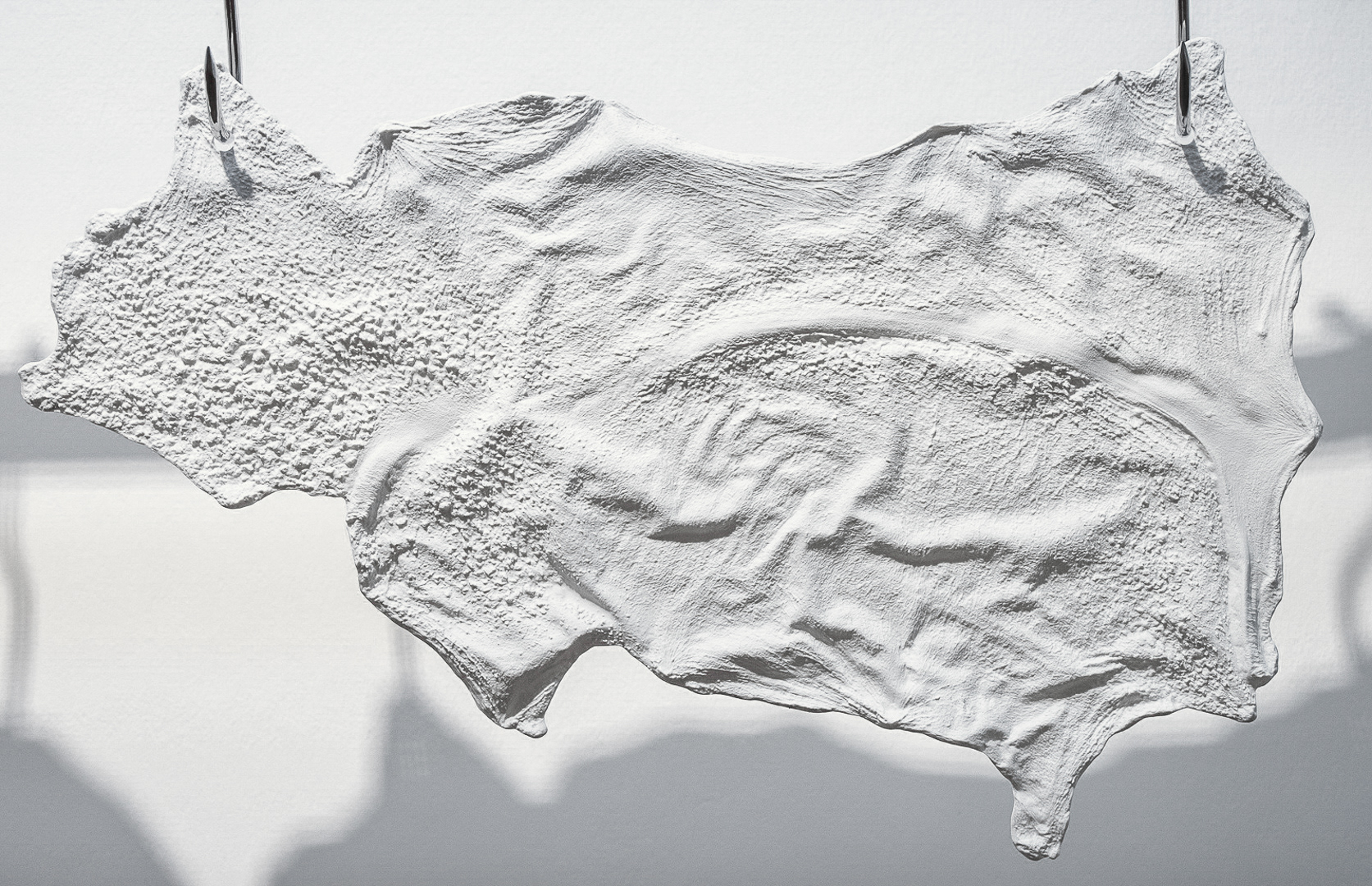Butcher Bliss / Fleischerei Glück, 2010
Porcelain imprints of the four ruminant stomaches. Porcelain and stainless steel; dimensions variable.
(Edition of 3 + AP) © Photo: TiKL 2017
Butcher Bliss / Fleischerei Glück (2010) is an additional obscure object, this time rendering especially palpable the juncture between civilization and barbarism – beauty and violence always playing a role in Nadia Kaabi-Linke’s work. The four porcelain pieces are moulds of the interior sides of the stomachs of a ruminant animal. Where in Am Hegelplatz the traces of a past war remain distinctly visible, in Fleischerei Glück the disgusting pre-history of the artifact – the killing of the animal; the removal of the stomachs; the foul stench of their contents; the streams of blood – has vanished without a trace. Through artistic metamorphosis, the interior skin of a digestive organ is transformed into an object whose materiality recalls the tableware upon which we ordinarily dine. It opens an associative field taking in both the bourgeois custom of bequeathing expensive porcelain as a dowry and forms of animal existence merely retained for the sake of slaughter.
—
Falko Schmieder, "On the Track of History". In: Tatort (2010), p. 59.
Falko Schmieder, "On the Track of History". In: Tatort (2010), p. 59.

Abomasum © Bernhard Link 2010

Omasum © TiKL 2017

Reticulum © TiKL 2017

Rumen © TiKL 2017
A Tunisian urban legend is saying there was a butcher who named his shop "Butchery of November 7th" in honor of the then President Zine Abedine Ben Ali. November 7th was the day on which Ben Ali took over the presidency from his predecessor Habib Bourguiba through a so-called “coup médical”. Since then, the government has celebrated this day and the number "7". Yet the butcher who supposedly wanted to pay homage in the interest of his business disappeared one without a trace. Rumors about what happened to the butcher circulated in the suburbs of Tunis and everybody seemed to be sure the double meaning of the shop's name might have had caused a fatal misunderstanding—fatal, of course, for the butcher.
[…]
It was only through this rumor of the missing butcher that I noticed the gruesome spectacle of many Tunisian butcher shops. Freshly cut meat is displayed in the showcases and on the counter, and a severed beef head often hangs next to the entrance door. This shows that the meat has just been slaughtered and as long as the blood is dripping, you know that the meat is still fresh. The names of these businesses were peace, joy, and happiness.
[…]
It was only through this rumor of the missing butcher that I noticed the gruesome spectacle of many Tunisian butcher shops. Freshly cut meat is displayed in the showcases and on the counter, and a severed beef head often hangs next to the entrance door. This shows that the meat has just been slaughtered and as long as the blood is dripping, you know that the meat is still fresh. The names of these businesses were peace, joy, and happiness.